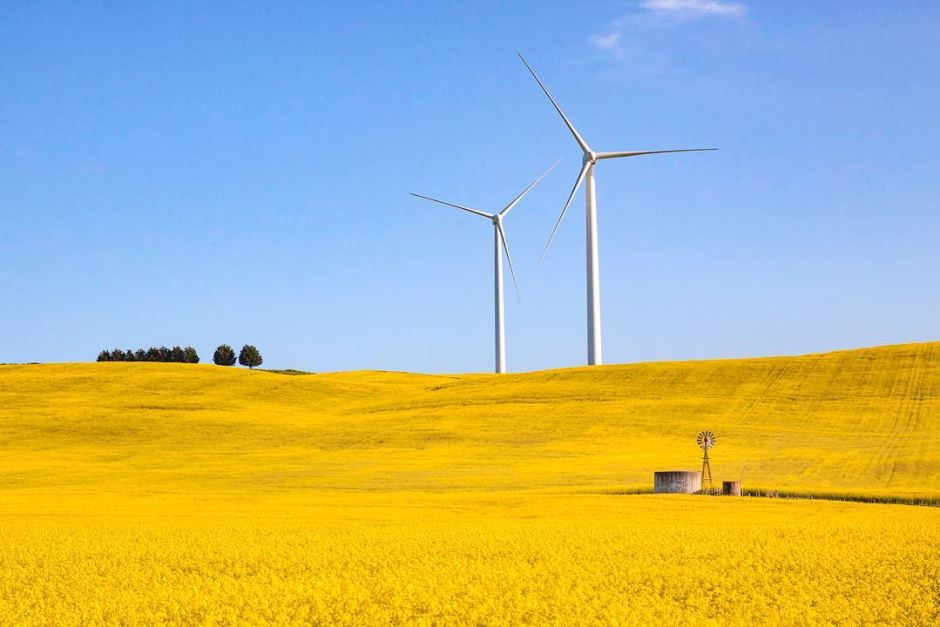Category: Energy / Solar Energy / Wind Energy / Environment / Business, Economics and Finance
IEA raises global renewable energy forecasts, but pessimistic on Australian wind power
Wednesday, 26 Oct 2016 12:36:28 | Stephen Letts

Renewables will account for 28 per cent of global power generation by 2021. (ABC Open contributor subterrania)
The International Energy Agency has said improved policy settings have accelerated the global uptake of renewable energy and forecast generation capacity in the sector will rise by more than 40 per cent over the next five years.
The Paris-based energy advisor to OECD nations forecast renewables would account for 28 per cent of global power generation by 2021, up from 23 per cent in 2015.
However, Australia still lags the world according to the IEA's latest Medium Term Energy Market Report, with renewables representing around 13 per cent of the total electricity output last year.
The 14 per cent fall in Australia's renewable energy generation in 2015 was largely driven by a substantial drop in hydropower resulting from drier conditions and lower reservoir levels.
The IEA forecast said Australian renewable capacity is expected to grow by 9 gigawatts (GW) - roughly 50 per cent of current levels - over the medium term, while generation is forecast to increase by 70 per cent to reach 54 terrawatt hours in 2021.
"Solar PV (photovoltaics) is anticipated to drive capacity growth with 5 GW, mostly from commercial and residential projects, although some utility-scale projects in the pipeline are seen coming on line over the medium term," the IEA said.
"Small renewable energy certificates, which provide an upfront payment to commercial and residential installers based on their estimated electricity generation over 15 years, should continue to make residential and commercial projects economically attractive."
While rooftop generation is expected to drive the growth in renewables in Australia, the IEA is far more guarded in its outlook for utility scale operations, particularly in wind generation.
"For onshore wind, the outlook is more pessimistic with the reduction of the large-scale renewable energy target in June 2015, which remains a forecast uncertainty over the medium term."
Australian consumers have benefitted from a steep decline in the cost of PV systems, with the average cost halving to $US2,000 ($2,600)/ kilowatt hour between 2014 and 2015, which is still more expensive than China, India and Germany, but roughly half the average cost of $US4,000 ($5,200)/kwh in the United States.
While falling costs have supported growth, the IEA said sustained policy support has been the key driver.
China - which houses the largest renewable energy market globally - is expected to expand its capacity by another 60 per cent over the next five years, supported by higher feed-in-tariffs and favourable government policy.
The IEA noted the United States' move into second place was aided by an extension of federal tax incentives which lifted a major policy uncertainty and improved investor confidence.
IEA executive director Fatih Birol said 2015 marked a "turning point" for renewables.
"Renewables have surpassed coal last year to become the largest source of installed power capacity in the world," Dr Birol noted.
"Renewables are expected to cover more than 60 per cent of the increase in world electricity generation over the medium term, rapidly closing the gap with coal."
However, Dr Birol said there were still grounds for caution.
"Policy uncertainty persists in too many countries, slowing down the pace of investments."
- About Us
- |
- Terms of Use
- |
-
 RSS
RSS - |
- Privacy Policy
- |
- Contact Us
- |
- Shanghai Call Center: 962288
- |
- Tip-off hotline: 52920043
- 沪ICP证:沪ICP备05050403号-1
- |
- 互联网新闻信息服务许可证:31120180004
- |
- 网络视听许可证:0909346
- |
- 广播电视节目制作许可证:沪字第354号
- |
- 增值电信业务经营许可证:沪B2-20120012
Copyright © 1999- Shanghai Daily. All rights reserved.Preferably viewed with Internet Explorer 8 or newer browsers.




 Send to Kindle
Send to Kindle